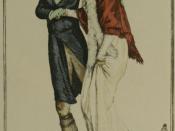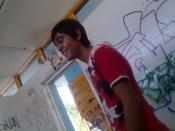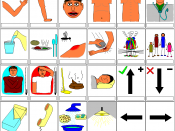tHE IMPORTANCE OF STUDYING NON VERBAL COMMUNICATION
REASONS FOR STUDYING NON VERBAL COMMUNICATION
? We make important judgements and decisions with nonverbal communication
? We can learn about the affective and emotional states of other people through nonverbal behaviors
? Many first impressions are formed through nonverbal cues
? Nonverbal communication has value in human interaction because much of out nonverbal actions are not easily controlled consciously
? Nonverbal communication has a strong link to culture
DEFINITIONS OF NON VERBAL COMMUNICATION
Includes all stimuli in a communicative setting generated by the individual and the individual's use of the environment. Stimuli must have potential message value for sender and receiver. Includes intentional and unintentional nonverbal messages.
? NONVERBAL CODES (facial expression, personal space, eye contact, use of time, conversational silence)
? CULTURAL SPACES
COMPARING NON VERBAL AND VERBAL COMMUNICATION
? SYMBOLIC MEANING
? OPERATES AT SUBCONSCIOUS LEVEL
? LEARNED BEHAVIOR
? COORDINATING
NONVERBALS AND VERBALS
Nonverbal behaviors can reinforce, substitute, or contradict verbal behaviors.
We generally believe that people have less control over their nonverbal behavior and so we perceive nonverbals as indicating the real message.
FUNCTION OF NON VERBAL COMMUNICATION - RELATIONAL MESSAGES
? REPETITION
? COMPLIMENTS / EMPHASIS (adds to what was said verbally)
? SUBSTITUTES / REPLACEMENTS (for what an individual was going to say)
? REGULATES AND MANAGES (the communication event)
? CONTRADICTION (nonverbal actions can send opposite signals)
ILLUSTRATORS: DIRECTLY TIED TO SPEECH AND THAT ARE USED TO DESCRIBE, REINFORCE, OR SUPPLEMENT WHAT IS SAID VERBALLY
REGULATORS: USED TO INFLUENCE OR CONTROL OTHER'S BEHAVIORS (HEAD NODDING , EYE CONTACT)
AFFECT DISPLAYS: BODILY AND FACIAL EXPRESSIONS THAT CONVEY OUR FEELINGS AND EMOTIONS. SMILING, LAUGHING, CRYING
ADAPTORS: BODY MOVEMENTS THAT USUALLY OCCUR WHEN WE ARE IN ANXIOUS SATURATIONS, UNCONSCIOUS (FINGERNAIL BITING, HAIR TWIRLING, EXCESSIVE BLINKING
WHAT NONVERBAL BEHAVIOR...



QUERY
Is this an essay or a list?
1 out of 3 people found this comment useful.